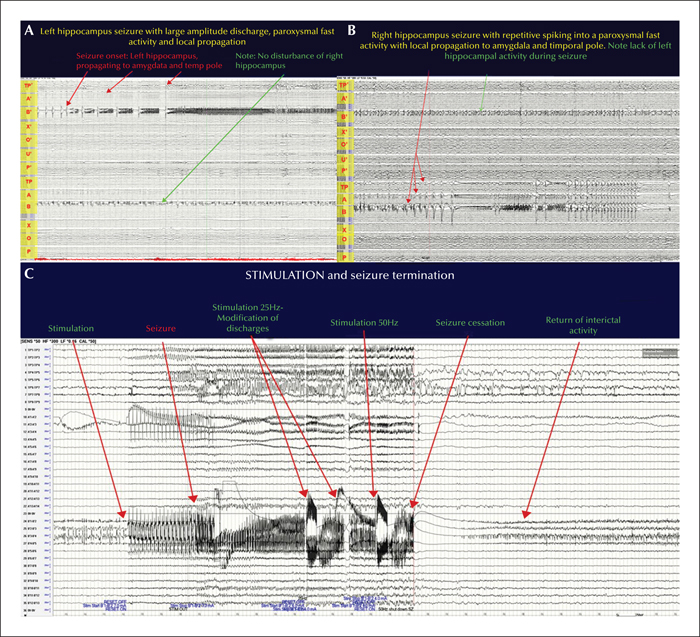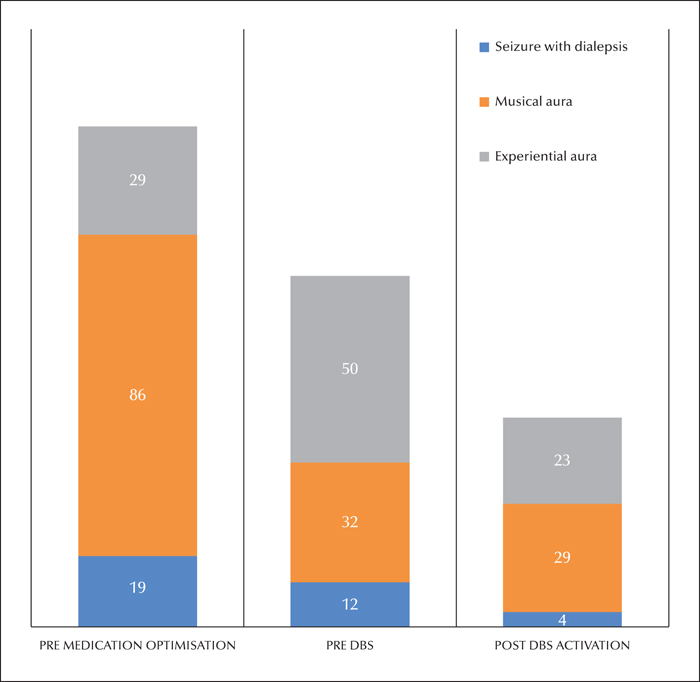Epileptic Disorders
MENURefractory epilepsy secondary to anti-GAD encephalitis treated with DBS post SEEG evaluation: a novel case report based on stimulation findings Volume 20, numéro 5, October 2018
- Mots-clés : anti-GAD antibody encephalitis, refractory epilepsy, deep brain stimulation
- DOI : 10.1684/epd.2018.0993
- Page(s) : 451-6
- Année de parution : 2018
We report a case of medically refractory anti-GAD encephalitis which was treated with deep brain stimulation (DBS) after seizure termination was achieved using cortical stimulation during stereo-electroencephalography (SEEG) evaluation. The patient underwent bilateral SEEG implantation and cortical stimulation. Upon stimulation, mimicking the intrinsic seizures (at 1 Hz), it was possible to induce seizures with typical semiology, on multiple attempts. Stimulation during these seizures with high frequency (50 Hz) resulted in complete termination of the seizure. DBS was inserted after the SEEG evaluation, targeting the bilateral anterior nucleus of the thalamus. There was a sustained reduction in seizure frequency and severity 12 months post insertion. There were also improvements in quality of life. To the best of our knowledge, this is the only case reported in which DBS was successfully used to treat refractory epilepsy in a patient with seizures that were proven to be responsive to electrical stimulation during SEEG recording.



